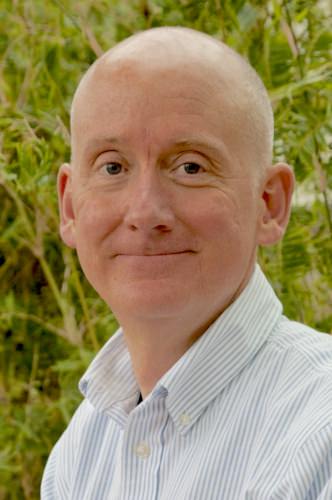Study shows stem cells fiercely abide by innate developmental timing
The mystery of what controls the range of developmental clocks in mammals — from 22 months for an elephant to 12 days for an opossum — may lie in the strict time-keeping of pluripotent stem cells for each unique species.
Developmental clocks are of high importance to regenerative medicine, since many cell types take long periods to grow to maturity, limiting their usefulness to human therapies. The regenerative biology team at the Morgridge Institute for Research, led by stem cell pioneer and University of Wisconsin–Madison Professor James Thomson, is studying whether stem cell differentiation rates can be accelerated in the lab and made available to patients faster.
In a study published in February online editions of the journal Developmental Biology, Morgridge scientists tested the stringency of the developmental clock in human stem cells during neural differentiation. First, they closely compared the differentiation rates of the cells growing in dishes compared to the known growth rates of human cells in utero. Second, they grew the human stem cells within a mouse host, surrounded by factors — such as blood, growth hormones and signaling molecules — endemic to a species that grows much more rapidly than humans.
In both cases — lab dish and different species — the cells did not waver from their innate timetable for development, without regard to environmental changes.
“What we found remarkable was this very intrinsic process within cells,” says lead author Chris Barry, a Morgridge assistant scientist. “They have self-coding clocks that do not require outside stimulus from the mother or the uterus or even neighboring cells to know their pace of development.”
While the study suggests that cellular timing is a stubborn process, the Thomson lab is exploring a variety of follow-up studies on potential factors that could help cells alter their pace, Barry says.
One aspect of the study that’s immediately valuable across biology is the realization that how stem cells behave in the dish aligns almost precisely with what happens in nature.
“The promising thing is that we can take species of stem cells, put them in tissue culture, and more confidently believe that events we’re seeing are probably happening in the wild as well,” Barry says. “That is potentially great news for studying embryology in general, understanding what’s going on in the womb, and disease modeling for when things can go wrong.”
Cells of the central nervous system take months to develop to a functional state, far too long to make them therapeutically practical. If scientists can shorten that timing to weeks, cells could potentially be grown from individual patients that could counteract grave diseases.
It also opens up potential avenues in embryology that would have been inconceivable otherwise — for example, using stem cells to accurately study the embryology of whales and other species with much longer (or shorter) gestation rates than humans.
In order to accurately compare development timing across species with wildly different gestation rates — nine months compared to three weeks — the team used an algorithm called dynamic time warping, originally developed for speech pattern recognition. This algorithm will stretch or compress the time frame of one species to match up with similar gene expression patterns in the other. Using this process, they identified more than 3,000 genes that regulate more rapidly in mice and found none that regulate faster in human cells.
The impact of solving the cell timing puzzle could be enormous, Barry says. For example, cells of the central nervous system take months to develop to a functional state, far too long to make them therapeutically practical. If scientists can shorten that timing to weeks, cells could potentially be grown from individual patients that could counteract grave diseases such as Parkinson’s, multiple sclerosis, Alzheimer’s disease, Huntington’s disease and spinal cord injuries.
“If it turns out these clocks are universal across different cell types,” says Barry, “you are looking at broad-spectrum impact across the body.”





